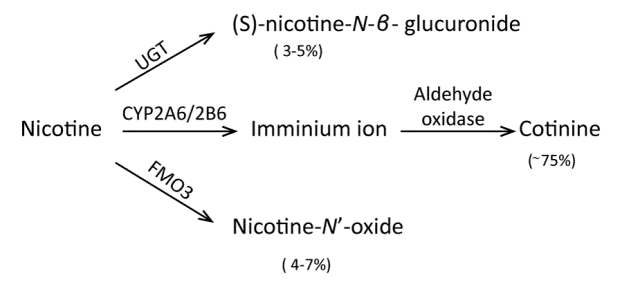
 |
| Figure 2: Important pathways for nicotine metabolism in humans. The majority of nicotine is converted to cotinine, which composes approximately 75% of the total urinary metabolites of nicotine [6,27]. Cotinine is produced by a two-step process catalyzed by a CYP450 enzyme and cytosolic aldehyde oxidase. CYP2A6 is the major CYP450 enzyme catalyzing the first reaction, with about 80% of total cotinine formation dependent on the activity of this enzyme. CYP2B6 has a minor role in catalyzing the first reaction in cotinine formation, but enzyme can assume a larger role in individuals with deficiencies in CYP2A6 activity. Other pathways contributing to nicotine metabolism include the N -oxidation of nicotine by flavin-containing monooxygenase 3 (FMO3) and glucuronidation of nicotine by UDP-glucuronosyltransferases (UGT). Other pathways of nicotine metabolism have minor roles, each contributing to the formation of less than 2% of the total urinary metabolites of nicotine. About 8-10% of nicotine is excreted in the urine unchanged. |